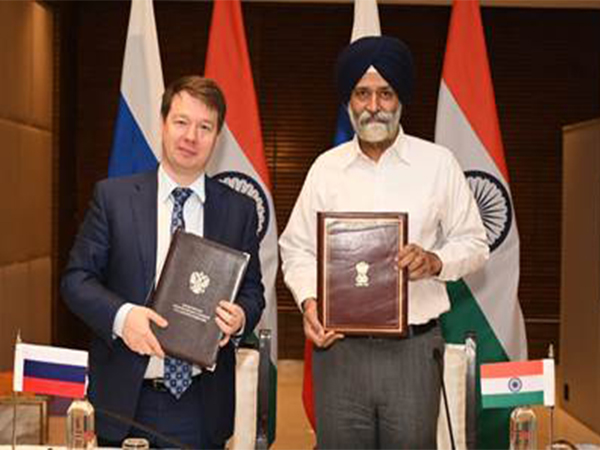Deadly effects of nuclear weapons can be reduced with help of dust particles, says research by Delhi-based scientist
Oct 15, 2020

By Priyanka Sharma
New Delhi [India], October 15 : Deadly effects of nuclear weapons can be reduced with the help of dust particles, a Delhi-based woman scientist has said in her research while noting that more testing is required in a controlled environment to see how things will work out on the ground.
Dr Meera Chadha, Principal Investigator of this project, affiliated with the Department of Mathematics, Netaji Subhas University of Technology, New Delhi, said the energy released and the damage radius of the blast wave produced by an intense explosion (a nuclear explosion in particular) reduces with time with the addition of dust. The presence of dust weakens the blast wave by reducing its strength. There is a reduction in the peak pressures as well.
The findings of her study have been published in the latest edition of the journal, 'Proceedings of the Royal Society A, London' and the 'Journal of Physical Society of Japan'.
Dr Chadha told ANI that their project titled 'Effect of dust particles on blast waves produced by nuclear explosion' was divided into three parts.
"Part one was published in the Royal Society Journal. In this study, through mathematical modelling, we have studied the impact created by adding 5 per cent dust particles and prevalent atmospheric conditions such as radiation effects and the changes in the vibration energy which take place due to the ionisation of molecules as the result of high temperatures near the vicinity of the blast. An approximate solution was worked due to the complexity of the mathematical model," she said.
The scientist said that the nuclear bomb dropped on Hiroshima evaporated everything within one-kilometre radius and this happened due to the high temperatures reaching millions of degree Kelvin.
"The damage to life and property was seen up to 1.6 kilometres. If we can reduce this damage radius to some extent, we have taken the first step in the right direction," Dr Chadha said.
In the second part of the study which is published in the 'Journal of Physical Society of Japan', the scientist has estimated reduction in damage radius by varying the quantity of dust (not limited to 5 per cent).
"We added a substantial amount of dust in our model after which the complexity of the problem increased. Depending on the intensity of the explosion, a substantial reduction in blast radius/damage radius and in peak pressure was observed," she said.
"In reality, the numbers always differ. On the ground, the situation is always different, but we are again coming back to the main thing, there is a reduction. This means dust can be used to reduce the strength of the blast waves," she added.
Dr Chadha, who is beneficiary of fellowship Women Scientists Scheme (WOS A), of DST conducted this research under the mentorship of Prof. J. Jena, who was also her Ph.D. Supervisor. She said that during her PhD, she studied about shock waves and how dust particles contribute to reducing their strength.
The scientist said she read a book 'Science towards Spirituality 'in which former President Dr APJ Abdul Kalam, was asked, "Can science create a cool bomb that can defuse or deactivate the deadly atom bomb?"
"This made me think that something more can be added to dust to create a cool bomb that can help in mitigating the effects of the explosion. Informal discussions at home with my husband, who has considerable knowledge of weapon systems due to his Army background, gave me enough confidence to undertake this study," she said.
"A lot of experts have to come together and interdisciplinary work has to done. Testing in a controlled environment/laboratory is required to see how these things will work out on the ground and whether redesign or restructuring of the model is required to make it functional," she added.


















